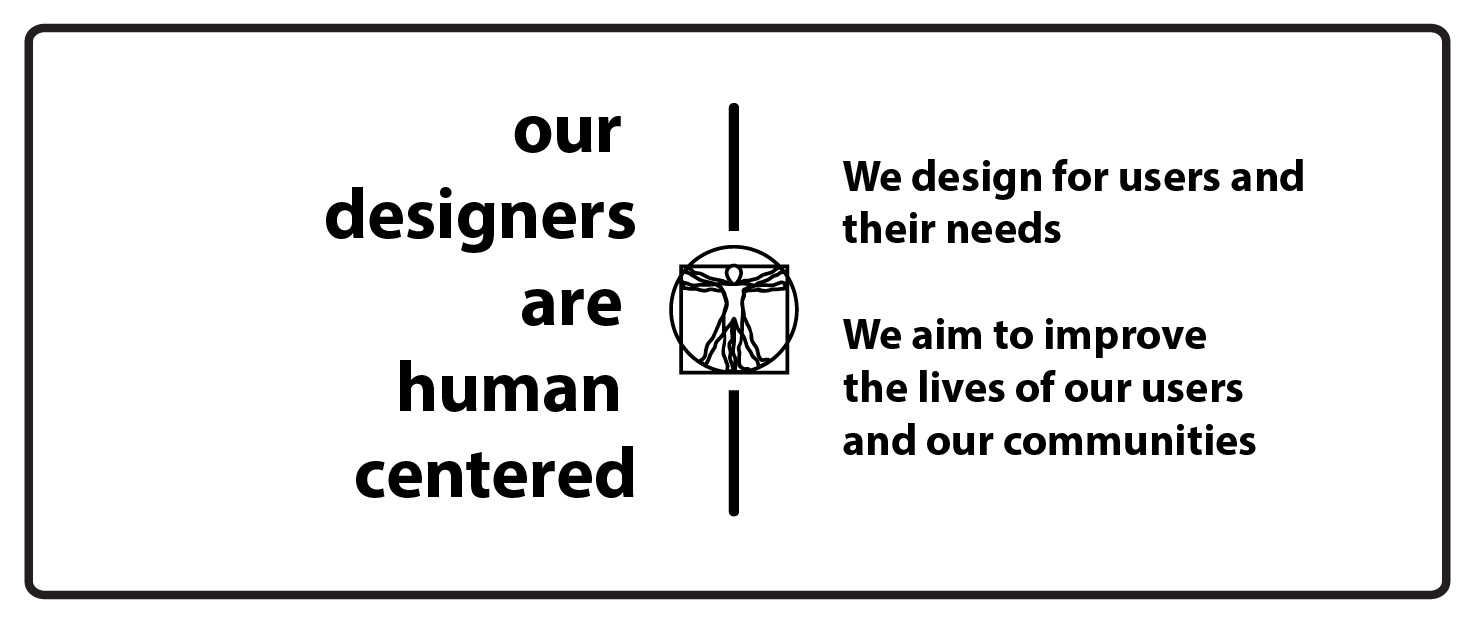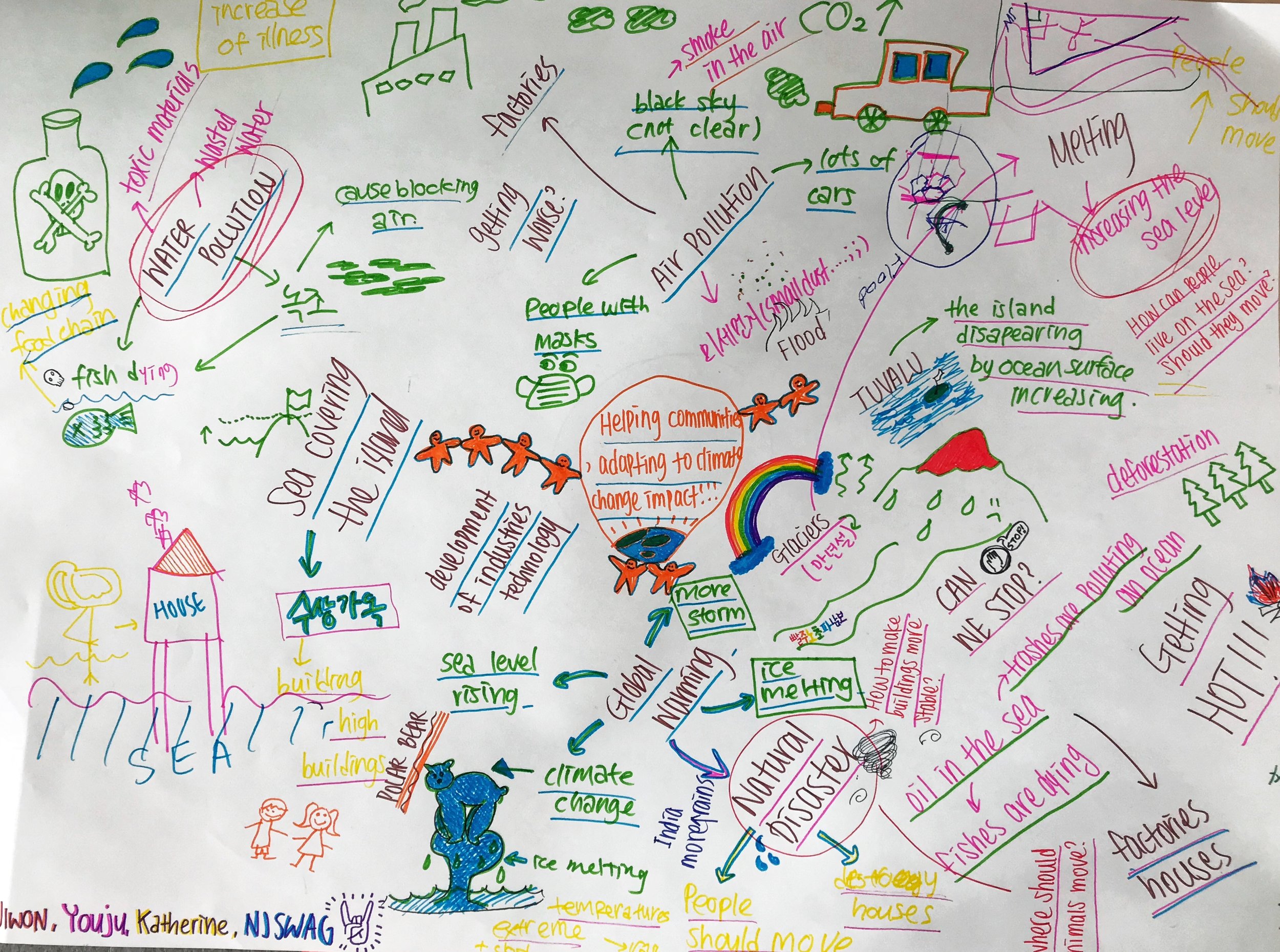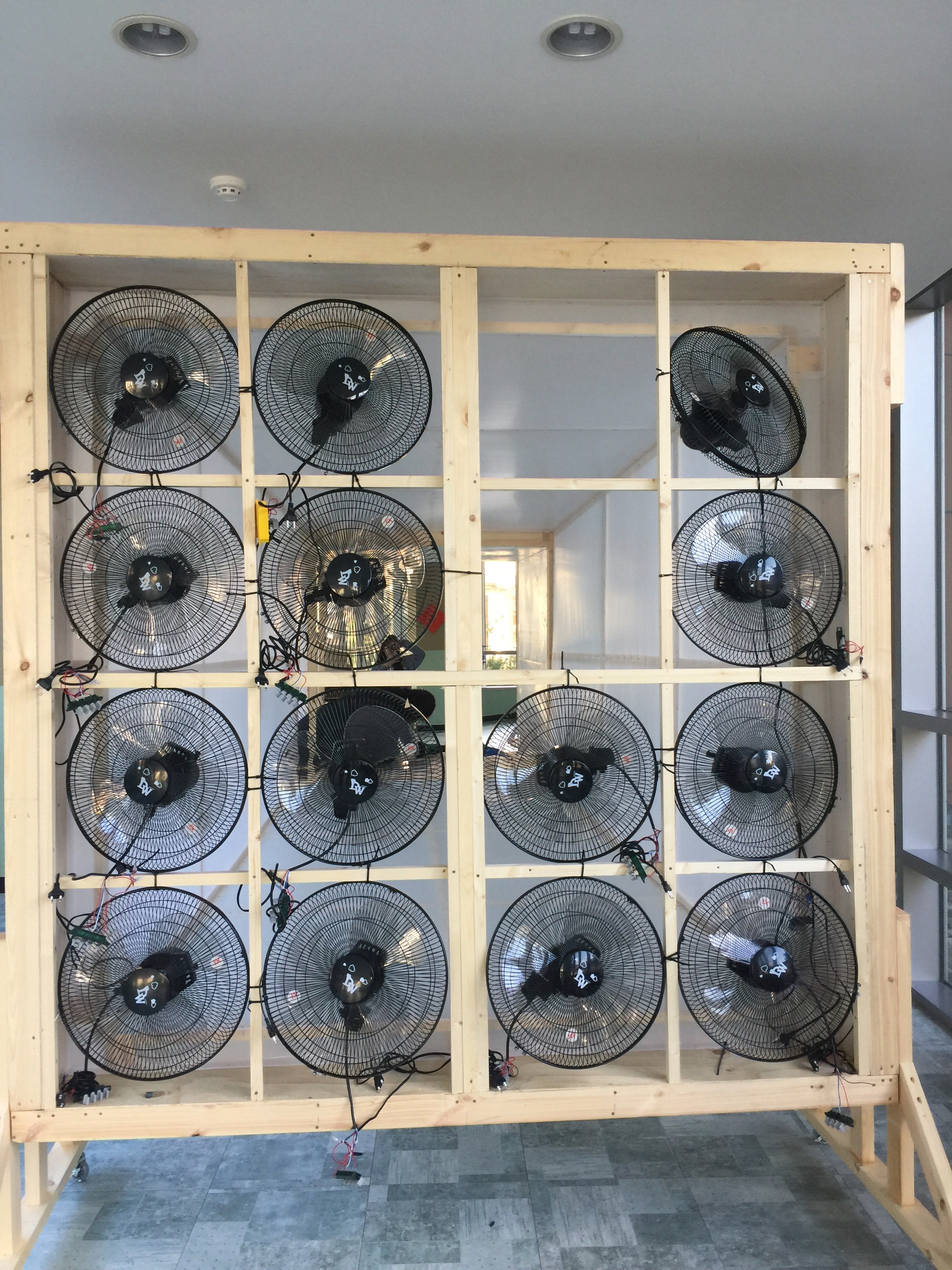As design educators, we constantly strive to deliver a rigorous, authentic, and relevant curriculum that fosters critical thinking and creative problem-solving. In our experience at BHA, we've found that refining the MYP Design curriculum can significantly enhance student learning and engagement.
Read MoreAssessment and Moderation in a Design Department
Opening up our gradebooks and sharing our assessment practices is an important way to reflect and learn about our teaching practice. In a program with multiple teachers for each grade level, being able to share our practice and get feedback on what is happening in our individual classrooms helps us as a team develop a more appropriate, rigorous, and consistent assessment standards.
Read MoreA UCD framework that builds empathy
Empathy is the driving force behind a successful design thinking project. Understanding the needs of the user is the key to successful design.
Read MoreDefining our students of design
We challenge our students to develop and think like designers. in our school students take design as a class all the way through middle school. Design and design thinking is integrated into many aspects of their teaching and learning.
As a design department, we are in constant conversation about what it means to teach design, what we want our students to learn, and they type of designer we want our students to grow into. We also wanted to communicate to the rest of our school community and visitors what it means to be a designer in our school, and what a designer looks like.
We started looking at the IB MYP Aims of Design and discussing how these are manifest in our teaching and learning experiences we provide our students. There are several aims covering a range of dispositions, skill sets, and knowledge. Reframing them to fit our context, we developed the following statements around the prompt of "Designers at BHA are..."
Each of these statements captures what it means to be a student of design at our school. We hope that as students progress through our program that they develop these traits, beliefs, and mindsets to affect positive change in world.
Biomimicry Inquiry: Nature inspiring solutions
Nature offers incredible inspiration and time-tested strategies that can be emulated and applied to climate change issues in realms as diverse as energy, water, transportation, buildings and infrastructure, food systems, health, behavior change, and more. Biomimicry is an exciting area of science and design that draws upon natural forms and shapes to inspire solutions to design challenges. It is rooted in the understanding that natural forms and systems are optimized for efficiency and sustainability.
Over four days in February, the Grade 10s participated in a biomimicry design challenge through an Inter-Disciplinary Unit of inquiry (IDU). Modelled on the Global Biomimicry Challenge, students used biomimicry approaches and concepts to create a nature-inspired innovation (a product, service, or system) that addresses climate change by either:
Helping communities adapt to or mitigate climate change impacts (i.e., those forecasted or already in motion), and/or
Reversing or slowing climate change itself (e.g., by removing excess greenhouse gases from the atmosphere).
Starting first with research, each team worked to narrow their focus and develop a research question that would guide them. A trip to the Yeomiji Botanical Gardens in Jungmun was valuable as the students could see first hand forms in nature that would inspire them in their designs. Using a taxonomy of biomimicry as a guide, students researched the various plants in the different biomes looking for possibly inspiration to their design challenge. After identifying strategies in nature that might be useful to solving their design challenge, students translated these biological strategies into design strategies. Examples of biological inspiration were: veins in the ears of a rabbit for transporting heat because pipes filled with water regulate temperature in buildings; geothermal heat was identified as a possible energy source for an air purification system; and jellyfish were used to inspire floating water filtrations systems.













Designers are collaborators. In their working teams, students collaborated, negotiated, and shared ideas and inspiration. The culmination of the IDU was the sharing and discussion of their ideas. Each team had taken a risk in exploring possible solutions. We closed our day with a celebration of inquiry and all the wonderful directions it can take us.
We are excited about the new possibilities this interdisciplinary unit has opened up for our students. Biomimicry has strong connections to Design and Science, and highlights how the two disciplines can work together to combat the issues that arise from climate change. But most importantly, this IDU showed our girls the power of inquiring together, taking risks, and using knowledge and skills to make the world a better place.
Exploring and extrapolating form
In this unit, students are investigating open source design and flat pack technology using CAD CAM technologies. At the beginning of the unit, we wanted to develop an understanding of what a flat pack design is, and how designers develop products using innovative methods for assembly. Developing a critical eye for how a product has been manufactured is an essential skill for a designer. Examining the individual components of a product and how they combine to create the complete form, can provide opportunities for innovation and exploration.
Our first goal was to look at different designs and consider their manufacture. Using a parts-purposes-complexities thinking routine, students explored different products. The challenge, though, was to extrapolate from a single photograph the components of the design. They did this through discussion, brainstorming, and sketching. Lots of debate, speculation, and sketching took place at this stage as they worked together to understand the design from limited information. The focus shifted to looking carefully at the product and considering how the various pieces were assembled, how joints were made, and elements of scale and proportion.
Next, the designs were transferred to corrugated board with the goal of optimizing the use of a single sheet of material. Here the focus had shifted to figuring out ways create the parts. After cutting, they assembled the parts for peer critique.
At the critiquing stage, the focus was on looking at how the design was assembled, and how it could be improved or modified. Using a see-think-wonder, students wrote feedback on the designs, making explicit reference to the different parts and components, and considering how the design was assembled. Throughout, the goal was to look critically and carefully at the assembled design, analyze its composition, and evaluate future iterations.
Developing an understanding of form and how pieces are connected and combined to create complex forms is an aspect of spatial visualization we have identified as an area of development in our students. Practice, application, and reflection will develop this skill and see it applied in future projects.
Guiding Principles: Dieter Rams' Principles for Good Design
As part of our inquiry into the role and purpose of design, grade 10s have been exploring Dieter Rams' Principles for Good Design. These have provided us with a starting point from which to evaluate, articulate, and create designs that are meaningful, useful, and focused on the needs of the user.
Through inquiring into these principles students explore their role as a student of design. Most importantly, they moved away from thinking of design as the making of attractive things, and towards the creating of meaningful solutions to authentic problems.
We began this process by generating our own list of criteria that made a design good. Then, we looked at Rams' principles and matched them to our own. Students then dove deeper, researching individual criteria, analyzing existing designs through the lens of the ten principles, and finally, creating a sketchnote showing their own understanding of the principles.
Playing with Solids of Constant Width
Solids of constant with are 3 dimensional forms that have a constant width regardless of their orientation. The simplest one is created from a equilateral triangle and is called a Reuleaux Triangle. Essentially, it is triangle with rounded sides.
By Frédéric MICHEL - travail personnel (my own work), CC BY-SA 3.0, Link
Solid of constant width modeled and rendered in Fusion 360
For the students, this has been a fun, and brief, inquiry into how CAD software CAM technologies can be used to inquire into mathematical concepts.We've been experimenting with these in class, exploring how we could create solids with different numbers of faces, as well as the applications of this kind of shape in design. The most common example is a rolling system comprised of non-spherical forms (Solids of constant width).
Files for Downloading:
STL files of shapes
File on Autodesk A360 (you can download the Fusion 360 data files here)
Sketchnoting for understanding
The Diploma Design class has a lot of material to cover, much of it quite dense. The challenge, from the teacher's point of view, is to find a way to get students to engage in the content that is challenging, meaningful, and collaborative.
We are experimenting with giant sketchnotes, as a form for researching and delving into knowledge. I've been interested in using sketchnotes for awhile as they hold great potential for organizing and reflecting upon knowledge.
Through this activity, students slow-down and consider how they will present the information they gather. This act of slowing down and reflecting is actually helping them process the information more quickly and deeply. Furthermore, just making the notes by hand and being off a digital device for a change encourages them to engage with the material in a fresh way.
Design Incubator for Personal Project
The MYP Personal Project is a major component for grade 10 students. It's an opportunity for them to delve into and research an area of their choice, and develop something that showcases their journey, knowledge, and understanding. It's a challenging project that depends on sustained motivation for it to be successful.
More and more of students girls are electing to do their personal project in a design-related area: coding, product design, or media. While the projects should be student-driven, we wanted to make sure they could have a team to lean on to help guide, motivate and support each other. The Design Incubator for Personal Project was born.
Lead by a small team of teachers, we've created several clusters. Students are grouped according to their design area (digital, industrial, or media); they are also grouped in mixed groups. Each group arranges meet-ups where they check in about their progress, discuss problems, and support each other. These meet-ups are student organized and led, and follow the grow-coaching model. As a teacher, it's been great to stumble across a meeting in the library or design room, and students are collaborating and supporting each other authentically on their personal projects.
Recently, some Grade 11's have taken over the incubator project and are leading it. It's now fully student-lead, with recent graduates of the MYP (the Grade 11s) mentoring and supporting the Grades 10s. So far, the feedback from the students is that they feel more in control of their project, and that they are using each other for inspiration.
Computational Thinking and the Design Cycle
The concept of Computational Thinking helped me see the teaching of coding in a completely new way. I was struggling to find a way to teach coding from an inquiry perspective, while at the same time ensuring students developed a strong foundation in basic principles. I wanted to avoid the rote teaching and practice of coding language, and instead engage at a deeper level with what coding is.
Framing the learning of coding from the perspective of computational thinking has helped me and my students really understand the essence of learning a computer code. There are several variations of computational thinking, but the one I'm following, and which is closely aligned with the IB computer science model, considers these four concepts:
- Algorithms: Understanding and creating rules
- Pattern recognition:
- Decomposition
- Abstraction
students creating shared understandings of computational thinking concepts
In the teaching of code, I've been emphasizing to students how computational thinking concepts can be applied to other areas of making. I shared the band Wintergaten's Marble Music Box, as an example of how computational thinking is employed to solve complex design problems.
Students watched the video and discussed where they saw loops, variables, patterns, and so on in the performance and the machine. They discussed how the designer might have used concepts like decomposition to create the machine.
Key to helping us understand and engage with computation thinking concepts were resources from Google and the BBC.
BBC's Bite Size site has a really engaging introductions to coding and computer science. We used this site to explore the concepts.
Google's Exploring Computational Thinking for educators does a great job of showing how CT can be applied to other areas of inquiry, and how features some great examples of lessons that apply CT to different contexts such as history, science, and geography--great examples of interdisciplinary learning.
Design-Build: Wind Tunnel Test Chamber
For an upcoming interdisciplinary unit on wind turbine design, the main focus was collecting reliable data to inform iterations of the design. The best way to gather accurate data is to have reliable testing conditions. So we decided to build a Wind Tunnel Test Chamber.
Along with a team of grade nine students and a couple of teachers, we constructed a 3-part test chamber. Our first discovery in our research was that wind tunnels pull air, not blow air. This produced laminar flow, which has very low turbulence, and hence, a consistent wind speed at the contact surface of the blades.
Using what we had, we "re-purposed" some standing fans to build a wall of 16 fans to pull air into the chamber. New power boxes were 3D printed to contain the switches and wires we harvested from the fans. The 1.2 meter square test chamber was equipped with an anemometer to measure windspeed right in front of the prototypes.
The frame was built of wood, with corrugated plastic sheets used for the panels. The corrugated plastic is very light and easy to work with.
Working alongside the grade nine girls, it was rewarding to see them develop their skills, confidence, and pride in working at such a large scale. It was a great opportunity for them to practically apply their geometry knowledge on a large scale and through manipulating materials.
Design:Build:Iterate BHA Wind Turbine Interdisciplinary Unit
We live on an island that is known for its wind. The annual exchange between Branksome Hall Asia and Branksome Hall Canada is centered around an inquiry into wind energy. This year’s inquiry took the BHX experience to a new level of inquiry, excitement, and challenge.
Inquiry is about investigating and exploring possibilities. It depends on a solid foundation of knowledge, and a willingness to take risks and explore possibilities. Following a visit from Professor Kim of the Wind Turbine Engineering Laboratory from Jeju National University, students began their inquiry into designing a wind turbine. With access to a variety of materials, technologies such as laser cutters, heat forming, and 3D printers, they explored the effect of blade angle, surface area, number of blades, and blade profile on their turbine’s ability to generate electricity.
For two months prior to the exchange, a team of BHA grade 9 students worked on the weekends to design and construct a wind tunnel test chamber. The centerpiece of the experience, the test chamber allowed for accurate and consistent measurement of turbine designs. Throughout the process, students collaborated with each other, used data analysis to continually iterate and improve their designs, and developed novel approaches to solving the design problem. Students innovated and experimented with materials in new and interesting ways--such as using elastic bands to tension the elements of their design, bending plastic with heat to create unique shapes, and building turbines with double sets of blades.
By applying scientific knowledge and mathematically analyzing the test data from the wind tunnel, students continually iterated and developed their turbine designs. With full access to the fabrication technology in the BHA Design Lab, we saw some students designing cross-sections of turbine blades in 3D modeling software that were later laser cut; others 3D modeled complex parts for turbine sections. One student announced that we had run out of a particular part, but not to worry because she had taken measurements and 3D modeled her own--Could we please print it on the 3D printer? It was wonderful to see students taking initiative and ownership of their learning and continually pushing their inquiry
Every aspect of this intensive project was guided by the ethos of design-test-iterate. The 2017 BHX strengthened the bonds between our two schools and provided our students with an authentic experience into what research, design, and testing entails and how to apply it to solving complex real-world problems.
Deconstructing the Design Cycle
A big focus this year is integrating the inquiry process to a greater degree with the MYP Design Cycle. It's important for students to understand that the Design Cycle is a cycle of inquiry, not just steps we follow to reach a goal.
Our first step was to look at the cycle and deconstruct it. We looked at each of the steps, and defined and described them in our own language. Students use text, images, charts, keywords, etc., to define and describe the cycle. The final step was to finish with reflection questions about the process.
As we continue our inquiry this year across a number of design units, we will return to this concept map again to help guide us.

































































































